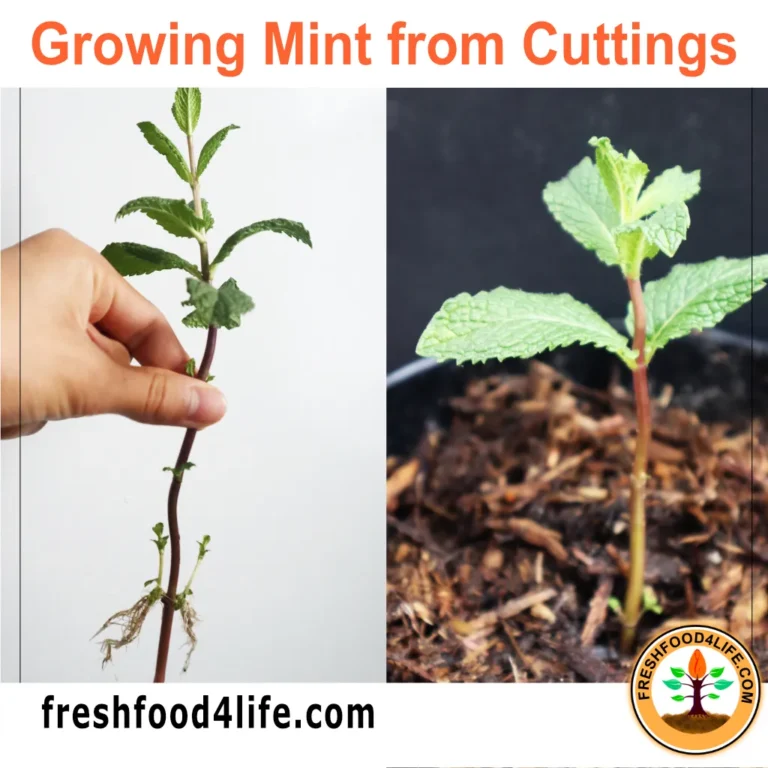Published: November 27, 2024 Last Updated: December 9, 2024

ComfreyComfrey A plant of the borage family that's native to Europe and Western Asia. It was brought to North America by Europeans. The plant has large, broad, hairy leaves and clusters of pinkish-purple, blue or white bell-shaped flowers. is one of the most beneficial perennial plant you can grow in your gardenhome garden A designated area around a residential property where individuals cultivate plants, fruits, vegetables, or ornamental plants for personal use. It comprises a farming system that combines physical, social, and economic functions on the area of land around a family home, providing a sustainable source of food and other benefits for the household, extended family, and friends.. It’s super easy to grow and has many uses. It’s used as a mulch, fertilizer, compost accelerator, pollinator attractor, and clay soil breaker. So today I’m going to share my complete guide to growing comfrey, from choosing the right variety to planting and caring for it.
Table of Contents
Understand Comfrey And It’s Uses
Comfrey (Symphytum officinaleComfrey A plant of the borage family that's native to Europe and Western Asia. It was brought to North America by Europeans. The plant has large, broad, hairy leaves and clusters of pinkish-purple, blue or white bell-shaped flowers. ) is a member of the borage (Boraginaceae) family. Plants in this family includes forget-me-nots (scorpion grass), echium, brunnera, cerinthe and of course the well-loved flower, borage. Comfrey is a perennial wildflower that grows along riverbanks and in grasslands in its native habitat. They produce beautiful pink, purple, or blue flowers in the late spring and summer, making it a favourite plant for pollinators.

Garden Uses

Comfrey has many uses in the garden. So let’s go over them.
- Mulch: Comfrey used as mulch is excellent for returning the minerals in the leaves back into the soil. The leaves contain lots of potassium and nitrogen in it, so your plants will get a big boost to grow bigger.
- Fertilizer: You can make a variety of liquid fertilizers from comfrey. A good fertilizer to make is comfrey tea. To make comfrey tea, fill a container with comfrey leaves and let it steep in water for up to 6 weeks. You’ll smell a horrendous smell, which means it’s ready for use. Strain the liquid and dilute it 1:10 for the garden.
- Compost Accelerator: What better way to make use of the comfrey plant than to compost it for nutrient rich soil. The fresh leaves of comfrey are excellent to use in compost because they break down really fast. So if you need any green material, comfrey leaves are a great choice.
- Pollinator Attractor: Comfrey produces bell-shaped flowers ranging from the colours pink to blue. They are rich in nectar, which can draw in various species of bees and butterflies, promoting biodiversity and enhancing pollination in the surrounding area.
- Improve Soil Health: Comfrey has long, deep roots that will help break up any clay soil. The roots also pull up nutrients from deep down where other plants cannot reach.
Traditional Uses
Traditionally, people grew comfrey for its anti-inflammatory and wound-healing effects, because of the presence of allantoin, a compound that promotes cell growth and aids in skin repair. In the herbal community, people typically call comfrey “knitboneComfrey A plant of the borage family that's native to Europe and Western Asia. It was brought to North America by Europeans. The plant has large, broad, hairy leaves and clusters of pinkish-purple, blue or white bell-shaped flowers. ”.
Herbal practitioners have historically recommended comfrey-infused ointments for treating bruises, sprains, and minor cuts. Never use comfrey internally; its pyrrolizidine alkaloids are toxic, damaging the liver and potentially causing death, so only external application is acceptable.
Characteristics

Identifying comfrey plants is not that hard at all.
Leaves: Comfrey leaves are large, broad, and hairy. The leaves can look different depending on where they are on the stem, and the leaf edges can extend down the stem to give the stem a winged appearance.
Flowers: Comfrey flowers are bell-shaped and grow in small clusters. They can be white, pink, yellow, blue, red, or purple, depending on the variety.
Stem: Comfrey has a thick, hairy stem.
Height: Comfrey can grow to be 1 to 5 feet (1.52 metres) tall.
Habitat: Comfrey grows in damp grassy places, ditches, riversides, bogs, fens, hedgerows, lanes, and damp woodland.
Types Of Comfrey
Comfrey is native to Europe and Western Asia. It was then brought to North America by English Settlers. Although you can find native wild comfrey in boreal, coniferous and mixed forests, across North America. The wild comfrey plant is smaller, growing to 15-30″ in height, and they produce flowers that are not bell-shaped. Comfrey is can become invasive in your garden if not contained. Below you’ll find 4 comfrey varieties that you can get for your garden.
Common Comfrey

Common comfrey is a hairy plant found near damp areas, beside rivers, in fens and ditches, and on roadside verges and waste ground. It often grows in clumps and displays clusters of bell-shaped, pinky-purple flowers from May to August. This variety also self seeds itself, so it may spread quickly.
Russian Comfrey Bocking 14
This Russian comfrey variety is a hybrid, and will not self seed itself. It’s a vigorous perennial that can grow to 6 feet (1.83 metres) tall, with oblong mid-green leaves. The flowers are purplish-blue, appearing from late spring through to summer. This variety also contains 7.09% potassium, compared to 3.09% with other varieties. So it’s excellent to use for fruiting crops and fruit trees.
Caucasian Comfrey

Caucasian comfrey produces magnificent, blue, bell-shaped flowers that bloom from late spring to early summer. This variety grows 2–3 feet tall. This variety is not a hybrid, so it will self seed itself.
Dwarf Comfrey

Dwarf comfrey is a comfrey plant that grows along the ground, only reaching 8–12 inches tall. They produce beautiful cream flowers that blooms in late spring to early summer.
Growing Comfrey
There are 2 ways to grow comfrey. One is from seeds, which is unpredictable, and the other is from root cuttings.
Growing From Seeds
Before planting your comfrey seeds, you want to put it in the fridge for 20–60 days to stratify the seeds for better germination. When ready to start, fill a small container, with good quality seed-raising mix. Sow your seeds about
1/2 inch deep. Keep the soil moist at all times and the soil temperature around 20-22ºC. The seeds should germinate in 25–30 days. Transplant outdoors when you have 2–3 sets of leaves and when it’s warm outside.
Growing From Root Cuttings
Growing comfrey from root cuttings is much easier. First, if you don’t have a plant you can take cuttings, we conveniently sell some from spring to autumn. Once you get the root cutting, plant them into a small pot. When you see leaves appear and roots begin to poke out the bottom of the pot, they are ready to plant out, when it’s warm outside.

Plant care

Soil
Comfrey loves loamy, well-draining, moisture holding soil that’s rich in organic matter. But they’ll also tolerate many other soil types. If you have heavy clay, the long, deep tap roots will help break it up. The pHpH A measure of the acidity or alkalinity of a solution on a scale of 0-14, with 7 being neutral. In aquaponics it refers to water quality and its effect on nutrient absorption and the health of fish, plants, and bacteria. of the soil should be in between 6.0 and 7.0.
Light
For comfrey to grow big and produce a lot of leaves, you have to give it full sun. A minimum of 3–4 hours of direct sun per day. In tropical climates comfrey will require shade so it wouldn’t wilt.
Water
Comfrey loves to grow in moist soil, but personally I’ve barely watered my plant, and it still produces a decent harvest, probably because of the deep taproot that can access water from below. So I guess you can consider comfrey drought-tolerant as well.
Fertilizing
Comfrey requires no synthetic fertilizing. A seasonal top-up of compost or aged manure is all the plant needs.
Maintenance
Growing comfrey requires little to no maintenance, except harvesting, which we’ll talk about later. If you have a self seeding variety, it’s best to remove the flowers before they produce seeds so they will not take over your garden or yard. Cutting the stem a little below the flowers will help encourage the comfrey plant to continue producing those beautiful florets.
Common Diseases/Pest Problems

Comfrey doesn’t have many diseases or pest problems. But there are a few.
Diseases
- Comfrey Mildew: Mildew on comfrey doesn’t happen often, especially when they’re planted in full sun. But if your comfrey plant is affected by it, you can make a baking soda spray. Add 1 tablespoon of baking soda and 1/2 tsp of natural liquid dish soap into a gallon of water. Shake it up and spray it onto your plants with a spray bottle. Mildew on comfrey typically happens on older, dying leaves, so make sure to remove them.
- Comfrey Rust: To get rid of comfrey rust, remove any leaves that are affected. Then apply a high potassium fertilizer, some compost, or some wood ash. Continue to remove any leaves you see that are infected as they grow and remember comfrey grows back fast, so don’t be afraid to remove all the leaves if you have too.
Pests
- Slug & Snails: These creatures like to eat your comfrey plants. To prevent that, make sure the surrounding areas around the plant is clean of any debris. Make sure the plant is pruned and kept tidy. If snails or slugs are still coming, you can set up a beer trap or use Sluggo Slug & Snail Killer Pellets.
Harvesting Comfrey
Harvesting your comfrey plant involves a strategic approach that helps maintain the health of the plant while maximizing leaf yield. Knowing when and how to collect comfrey leaves is crucial for those looking to incorporate this versatile plant into their gardening practices. Ideally, the best time to harvest comfrey is during the growing season, throughout spring into fall, specifically every 4–6 weeks, when the leaves are lush and rich in nutrients. Stop harvesting 1 month before your first fall frost date.
To effectively harvest comfrey, use clean, sharp pruning shears to cut leaves just above the base of the plant. This technique encourages new growth and helps the plant to thrive. Regular harvesting every few weeks can lead to a continuous supply of fresh leaves throughout the growing season, supporting a steady production of new foliage. Don’t forget to wear protective gloves because the stems are spiky.
Final Thoughts
With its robust growth and diverse uses, comfrey can be a valuable asset to any garden. Growing comfrey isn’t hard at all. Remember, comfrey doesn’t require much work, so anyone can grow it. Just make sure to plant in a contained area, so it won’t spread. By doing so, you can enjoy the rewards of this versatile perennial.

References:
https://www.permaculture.co.uk/articles/comfrey-its-history-uses-benefits/



